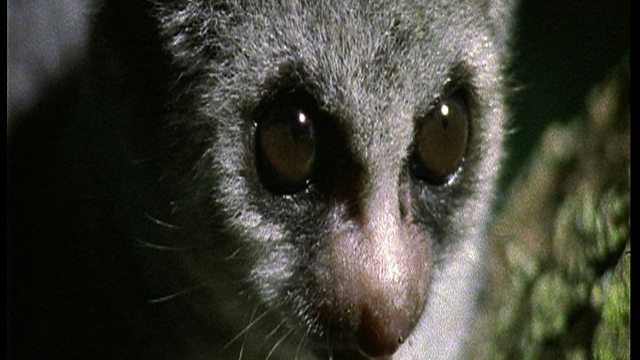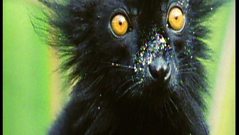
Arboreal ancestors
The pygmy mouse lemur and fat-tailed dwarf lemur offer clues about early primates.
When the dinosaurs became extinct 65 millions years ago, the first trees appeared on earth. The forests brought new opportunities and a few small animals climbed the trees and made themselves at home. The world that primates inhabit now is very different, but in the dry forests of Madagascar there is still an animal that can give us a tantalising clue about our earliest ancestors. All primates - including ourselves - evolved from a creature very like the pygmy mouse lemur. It is the smallest primate in the world and belongs to a group called the pro-simians - the first primates. Its large eyes face directly forward just like ours, so it can judge depth and distance in the branches. We also have the same hands which can grasp and feel. It was these two features that allowed the first primates to take to the trees. But there is something else we have in common: a curiosity about the world around us. The new forests provided fruits and flowers, and plenty of insects to eat in the canopy for those who could get to them. Fat-tailed dwarf lemurs, for example, are well-equipped to take full advantage of the bounty. It has the same forward facing eyes and grasping hands, but it has some strange habits. It nests in tree holes just like a dormouse, and it hibernates during the dry season to save energy. Dwarf lemurs cosy-up together, tucked out of sight, and use the fat stored in their tails to get them through the lean months ahead. These humble beginnings led to more sophisticated ways of life.
Duration:
This clip is from
Featured in...
![]()
ÃÛÑ¿´«Ã½ Nature
Be captivated, informed and inspired by the world's wildlife.
More clips from FIRST PRIMATES
-
![]()
Poison bath
Duration: 02:10
-
![]()
Pitched battle
Duration: 03:00
-
![]()
Millipede insecticide
Duration: 03:09
-
![]()
Treetop babysitters
Duration: 02:23
More clips from Cousins
-
![]()
A nose for swamp food—MONKEYS
Duration: 01:32
-
![]()
Food for thought—APES
Duration: 02:14
-
![]()
Free lunch—MONKEYS
Duration: 01:17
-
![]()
Monkey medication—MONKEYS
Duration: 01:24










